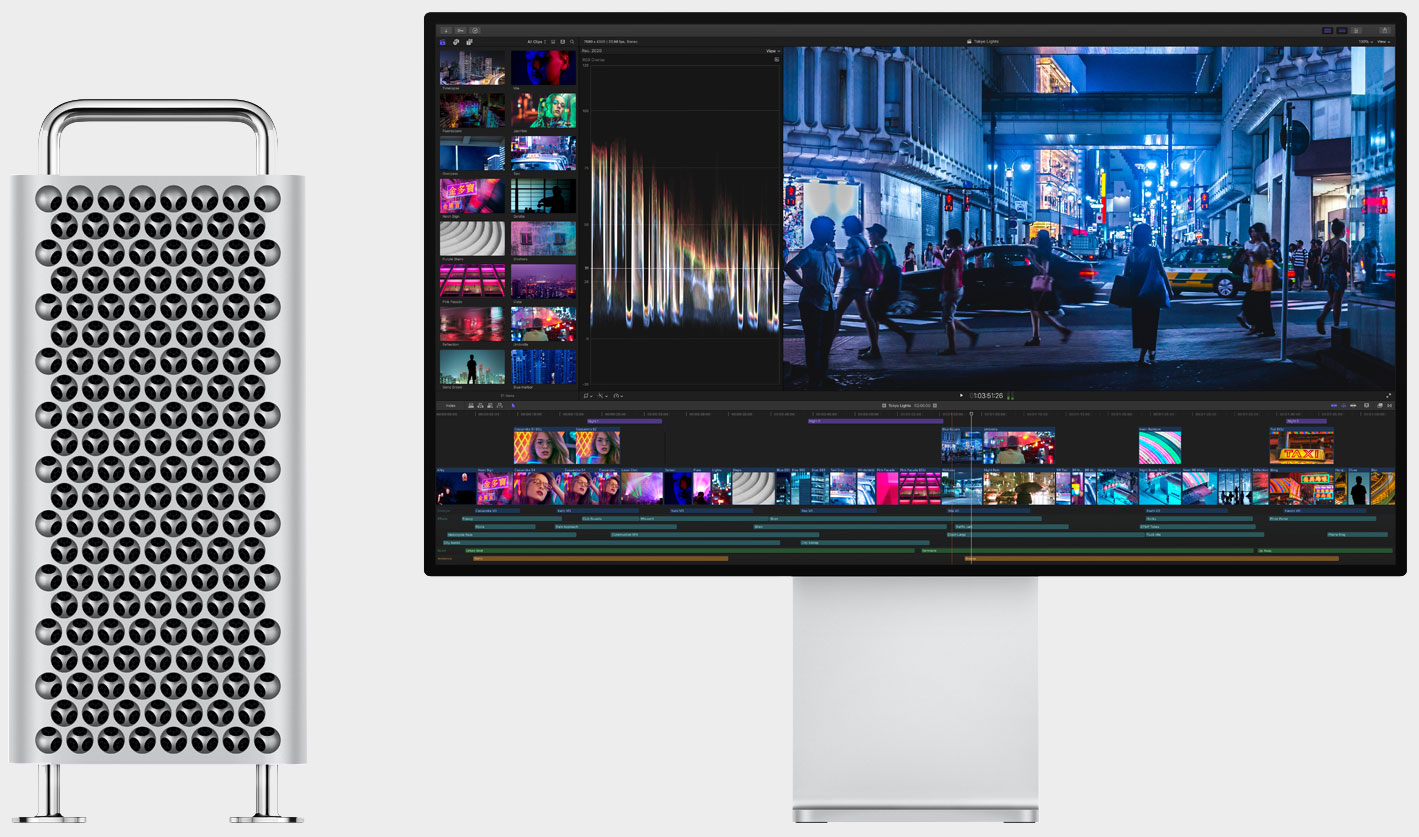Apple's new workstation costs $6000, only has 256GB SSD
Big claims and a big price, but small on storage.

During its WWDC event, Apple unveiled its redesigned Mac Pro, a "breakthrough workstation for pros" who need the type of heavy lifting that workstations provide. Perhaps what is most impressive is the graphics architecture, which I'll offer some details on in a moment. The least impressive thing has to be that Apple skimped on storage (or the fact that it looks like a giant cheese grater)—the base model costs $5,999 and comes with just a 256GB SSD, hardly the best SSD for gaming or best NVMe SSD.
That's not much to work with, especially when Apple is pitching the new Mac Pro as being ideal for working with 8K and 4K videos. Those tend to be large—very large—and it's a bit ridiculous that a system that costs six grand doesn't come with more storage.
Other base specs include an 8-core Intel Xeon processor, 32GB of memory, and a Radeon Pro 580X graphics card. For the money, those specs are not all that exciting. However, there are some notable bits about the Mac Pro that caught our attention.
For buyers who have a big enough bankroll, the Mac Pro can be configured with up to a 28-core Xeon processor, up to 1.5TB of ECC RAM, up to 2TB of storage, and up to four Vega II GPUs.
The graphics implementation is particularly interesting. It serves as the launchpad for AMD's Radeon Pro Vega II, which features up to 14 teraflops of compute performance and 32GB of memory, with 1TB/s of memory bandwidth. It's basically a professional version of the Radeon VII, with twice the HBM2 capacity. There's also a Radeon Pro Vega II Duo option—it features two Vega II GPUs for 28 TFLOPs of graphics performance and 64GB of memory, which Apple claims is "the world's most powerful graphics card."
NVIDIA might have something to say about that, but what's interesting—and also restricting—is that they're installed as "MPX modules."
"Mac Pro features the world’s most powerful graphics card and up to 56 teraflops of graphics performance in a single system. Its groundbreaking graphics expansion architecture, the Apple MPX module, features Thunderbolt integration and over 500W of power, both firsts for any graphics card. And for super quiet operation, the MPX module is cooled by the Mac Pro system thermals," Apple explains.
The biggest gaming news, reviews and hardware deals
Keep up to date with the most important stories and the best deals, as picked by the PC Gamer team.
A pair of MPX modules with dual Radeon Pro Vega II GPUs equates to a quad-GPU arrangement. That is a ton of GPU horsepower. However, this also implies that GPUs will need to be purchased from Apple, and users will be at the mercy of the company's pricing.
What about an Nvidia GPU? It might be technically possible to slide one in, but only with drivers from Apple. It seems Apple is all-in with AMD for this round, as it pertains to graphics.
There is also an "all new PCIe connector" on the bottom of the Mac Pro, for power delivery. It's capable of up to 475 watts, plus 75W from the x16 PCIe slot.
We're in workstation territory, so obviously there is a premium that comes with that, both in price and performance. Still, you could very likely build a cheaper alternative, and it certainly would have more flexible upgrade options.
It wouldn't be cheap, though. For reference, Intel's 8-core Xeon W-3225 (Cascade Lake) is $1,199. The cheapest 28-core Xeon chip, the Xeon W-3275 (also Cascade Lake) is $4,449. Apple isn't using either of those chips, based on the listed cache sizes, which means the CPU prices are potentially much higher.
This all massive overkill for gaming, obviously. By our super rough estimate, a fully loaded Mac Pro could creep into $40,000 territory. That's a lot of cheddar.
Paul has been playing PC games and raking his knuckles on computer hardware since the Commodore 64. He does not have any tattoos, but thinks it would be cool to get one that reads LOAD"*",8,1. In his off time, he rides motorcycles and wrestles alligators (only one of those is true).


